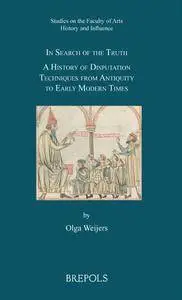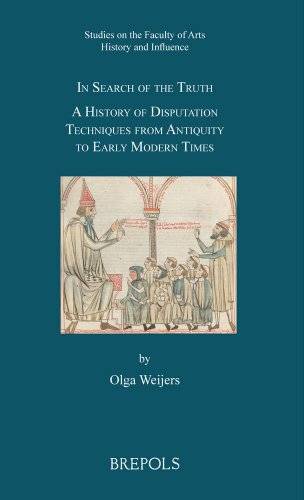In Search of the Truth: A History of Disputation Techniques from Antiquity to Early Modern Times (Studies in the Faculty of Arts. History and Influence, Book 1) by Olga Weijers
English | 2014 | ISBN: 2503550517 | 341 pages | scanned PDF | 6,2 MB
English | 2014 | ISBN: 2503550517 | 341 pages | scanned PDF | 6,2 MB
Disputation and debate have accompanied human development from its beginnings. However, what we still call disputation, technically speaking, is a particular method of reasoning and analysing, involving either a debate between two people, or of one person with himself. It is this method which is the object of this study. The disputation was one of the main methods of teaching and research during the Middle Ages. Tracing its development shows how it influenced the way in which people examined abstract problems. Reasoning and arguing about contradictory positions remained a feature of intellectual life well into the nineteenth century, and the practice remains alive even today. For a long time the disputation was the main tool for analysing problems in a range of fields, especially in philosophy and theology. The main features were the analysis of opposite positions and thorough discussion of the various arguments for both sides, the collective search for the truth in special public disputations, the recognition that the truth may differ from the conclusion reached and the willingness to accept better arguments if they brought one closer to the truth. All this is typical of an intellectual attitude, the key features of which are critical thinking and honest collaborative research, that still marks the Western world. The history of the disputation can tell us something about the way in which we learned to think.



